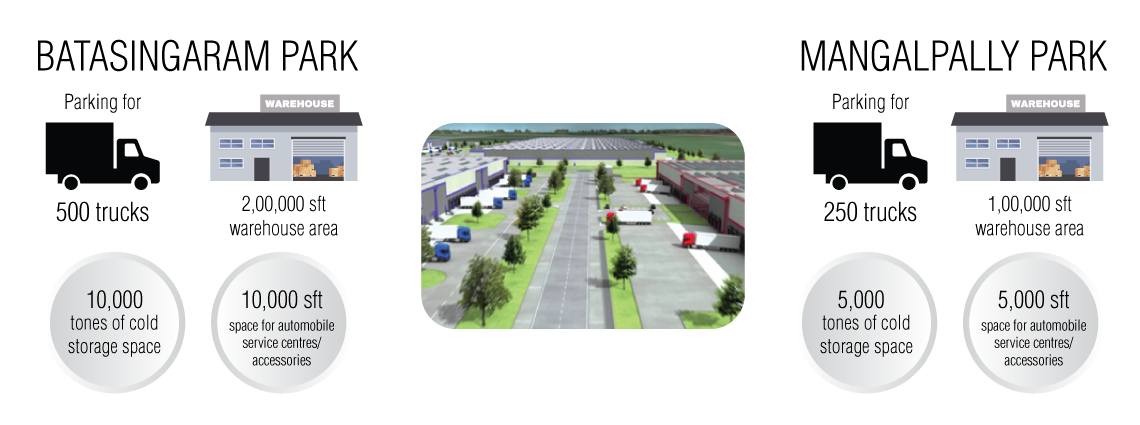
Global
The proliferation of both trade agreements and protectionism among various nations is the major demand driver of the global logistics market. Within countries, logistics as an opportunity is growing due to increased consumerism, economic development and newer ways of doing business like E-Commerce.

Until recently, logistics was barely considered in the long-term plans of most businesses, but its strategic role is now being recognized and it lies at the heart of long-term plans. There are many reasons for this change: communications and information technology are offering new opportunities; world trade is growing; competition is forcing operations to adopt new practices and become more efficient and there is an increasing concern for the environment. The rapid proliferation of E-Commerce is a recent trend. Add to this the increased emphasis on consumer satisfaction, flexible operations, and time compression, and it becomes clear why it is so important to get logistics aligned to the supply chain of any business.
New trade corridors between Asia and Africa, Asia, and South America and within Asia will re-chart global supply chains. Trade volumes are shifting towards emerging markets and least developed countries will take their first steps into the global marketplace.

India
The performance of logistics sector in the economic development of India has never been more compelling. A robust logistics sector can go a long way in boosting India’s quest for being a manufacturing giant given that several initiatives like ‘Make in India’ have been launched by the government. Increasingly, companies across the globe are looking at the world as both a unified production base and a market that a competitive logistics sector can successfully tap into. The industry has seen rapid growth in the last few years due to increased planned outlay of the government, improved infrastructure facilities and greater access to global markets.
The demands on the logistics sector are being further reinforced by rapid technological change like the adoption of Digital Technologies, IoT and Blockchain, the emergence of E-Commerce, autonomous mobility and the establishment of a large number of Special Economic Zones and Industrial Parks. The implementation of GST has also thrown up significant opportunities in the sector. The establishment of dedicated freight corridors, containerization, inland waterways, more highways and expansion of air connectivity, ports & railways has resulted in an explosion of activities in the sector creating a huge demand for warehouses and container stations. The industry is expected to witness a structural shift over the next 3–5 years as it gets more organized and consolidates.
Logistics cost in India accounts for 13-17% of the Gross Domestic Product (GDP) which is nearly double (6-9%) the logistics cost to GDP ratio in developed countries such as the US, Hong Kong, and France. Much of the higher cost could be attributed to the absence of efficient intermodal and multimodal transport systems. There is immense scope for investments to achieve value chain efficiencies.
Telangana
Hyderabad, which has emerged as a major investment destination, connects several industrial corridors in the country and has a major geographic advantage to become a key logistics cluster. The award-winning Hyderabad Airport offers a gateway to several international destinations.
The latest CBRE research shows Hyderabad is growing at a rate of 12 percent in the logistics space. Realizing the potential, the State Government is developing a first-of-its-kind logistics park at Batasingaram in Hyderabad in 40 acres with an investment of Rs 50 crores. Located at the Outer Ring Road, the park connects the Vijayawada belt to Hyderabad. The project will have warehousing, parking (for 500 trucks), and retail facilities. It will offer a range of services: fuel station-cum-automobile repair, public health center, bank, food court, dormitories, café, entertainment, and administrative building. It will have provision to park 18-m-long trailing trucks. There will also be a hangar facility for e-commerce companies. The project meets norms and design standards set by the Indian Road Congress, National Fire Protection Act, National Building Code, and Telangana Government’s GO 168. There is a provision for brownfield expansion as well. Singapore-based architects have extended their design expertise for the project. The project that began in November 2017 is expected to achieve its break-even by 2024.

The Hyderabad Metropolitan Development Authority has provided for 13 Logistics zones in the Master plan for this growing Metropolis. This is bound to attract investments from private logistics players in the coming years.
The government of Telangana is also planning to develop a Dry Port Facility in Nalgonda District. A dry port is an integrated container depot/terminal or container freight station where an exporter can complete all customs formalities without actually moving the cargo to the port. It will have a strategic location to function as a hub of economic activity with multi-modal connectivity to the nearest ports in Andhra Pradesh and Tamilnadu. This would be a state of the art of facility in the Public-Private Partnership (PPP) model. The Government is currently looking for private partners to develop the project.
Ease of doing business, proposed Pharma City, and TS-iPASS would benefit Telangana in scaling up in the sector, and in three years, the State could see five times growth. The logistics policy that the State government would soon rollout would enable the creation of 10-12 more logistic parks in the next two-three years. With the demand for cargo management going up, Telangana plans to develop two cargo-specific projects around Hyderabad. There is a strategic plan to create a multi-modal cargo network. The Government is also supporting various skill development programmes to meet the increasing need for talent in the sector.
Immediate opportunities include warehousing, cold chains, container freight stations, air cargo complexes, multimodal freight transportation, IT services, support services, and infrastructure development. Logistics players can hope to get land and provide integrated services in the Common Utility Zones of various Industrial Parks that are being set up in the state, especially in and around Hyderabad.










